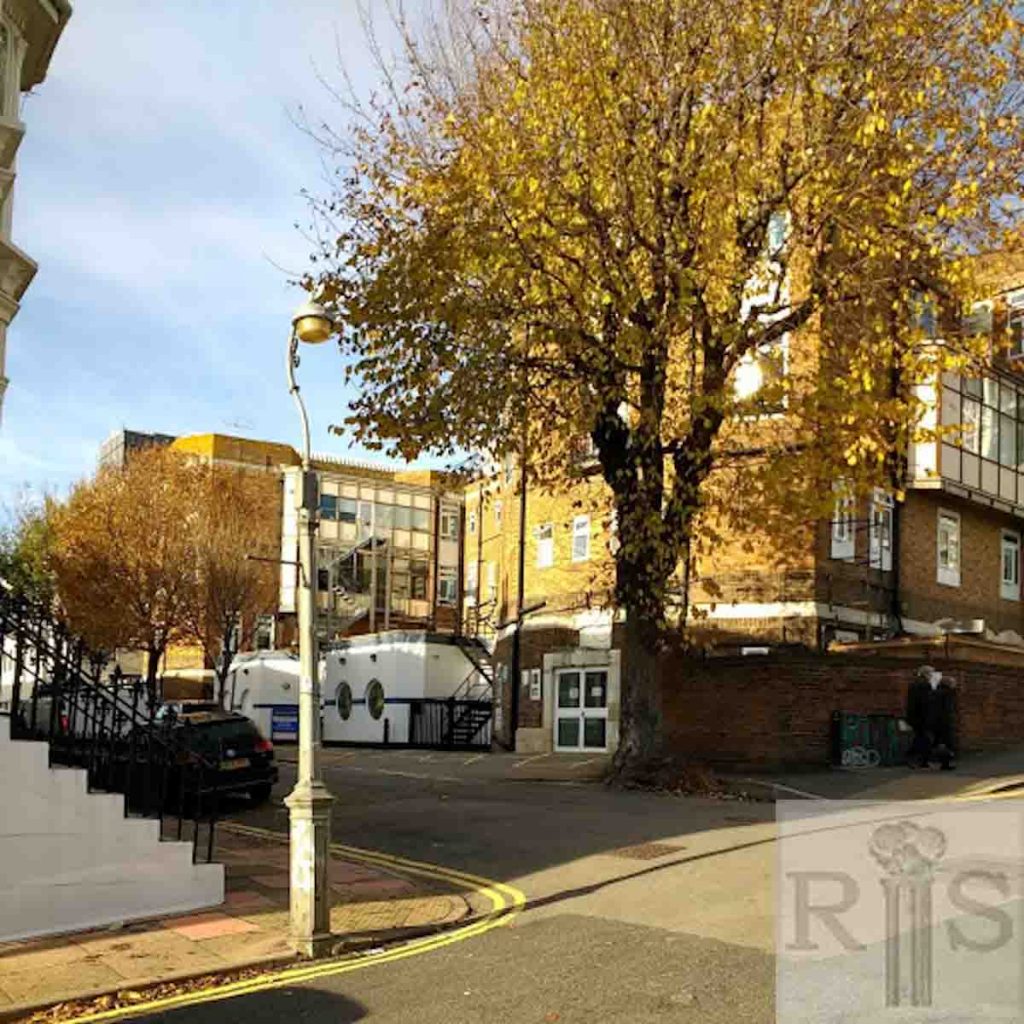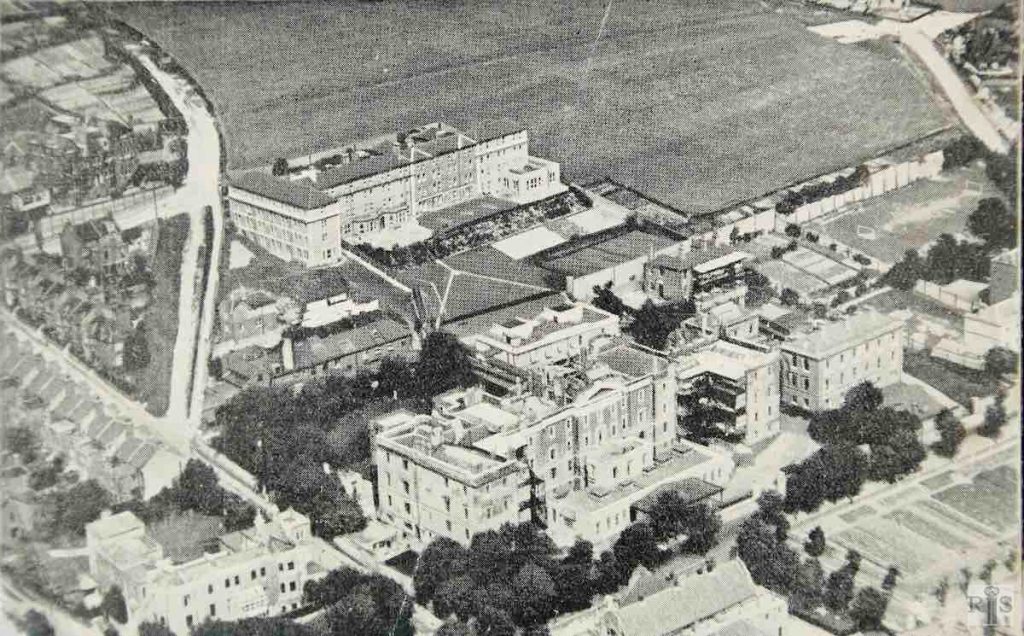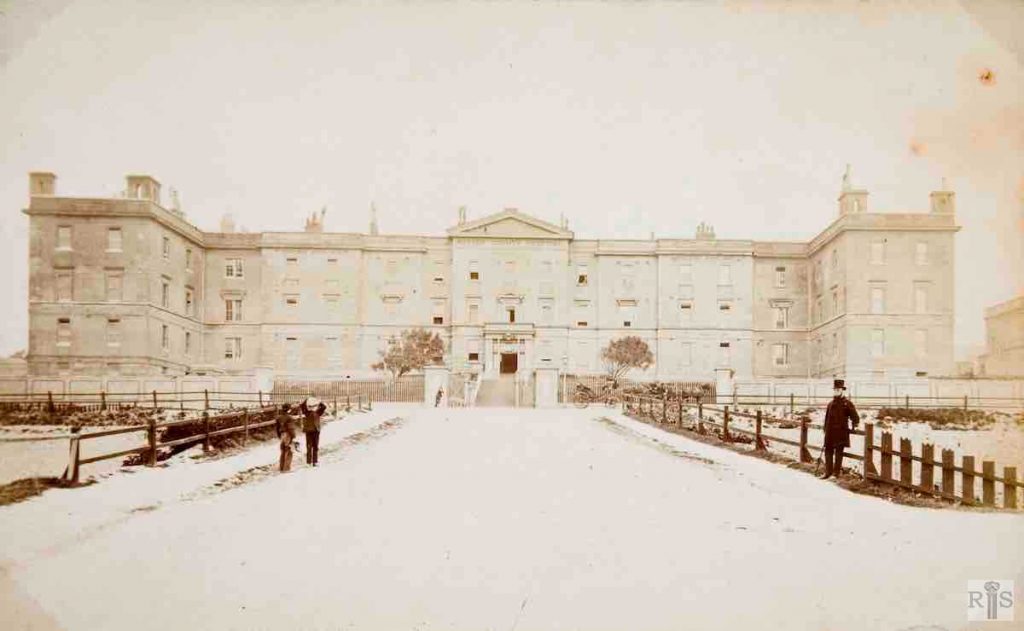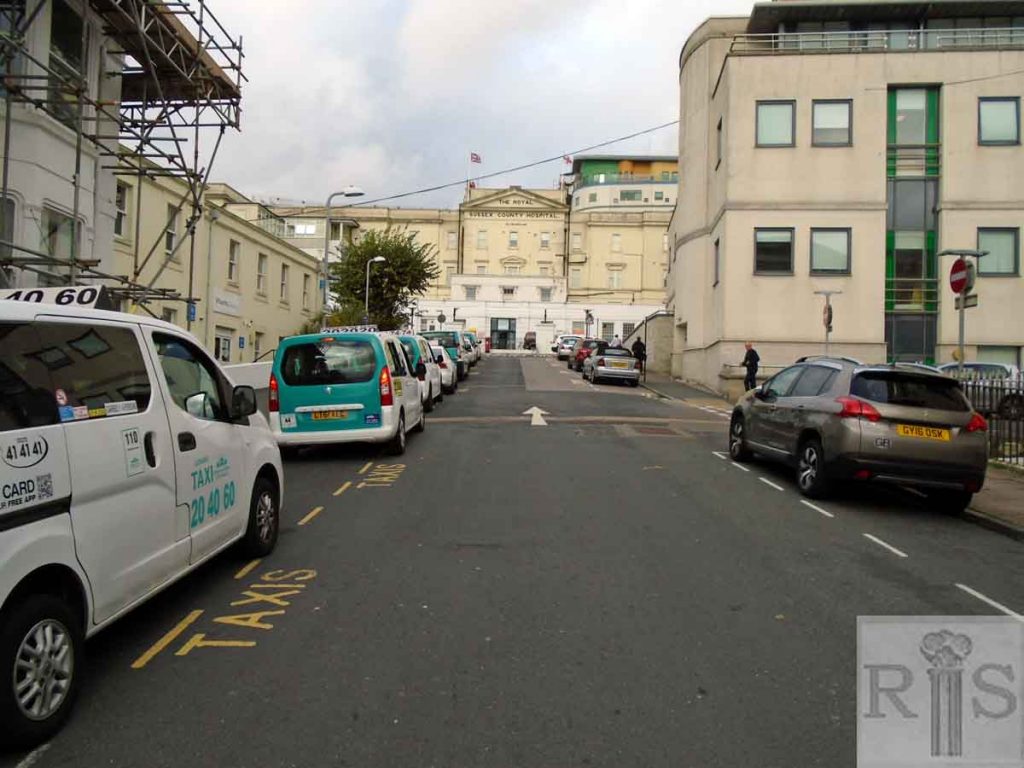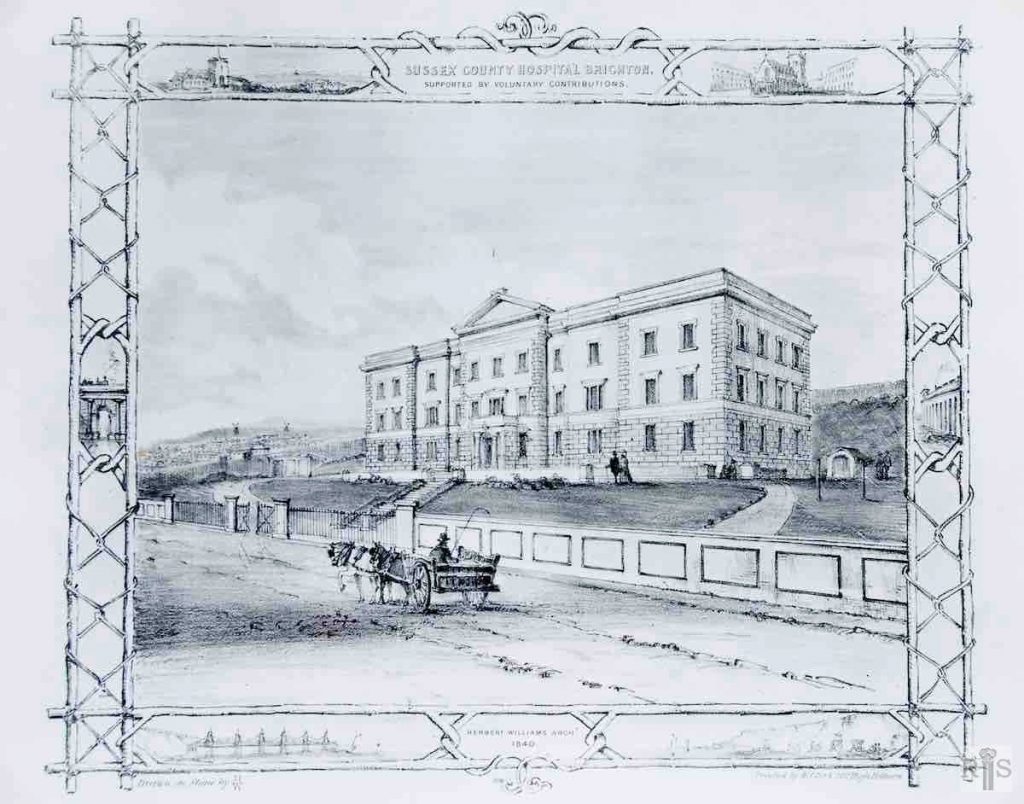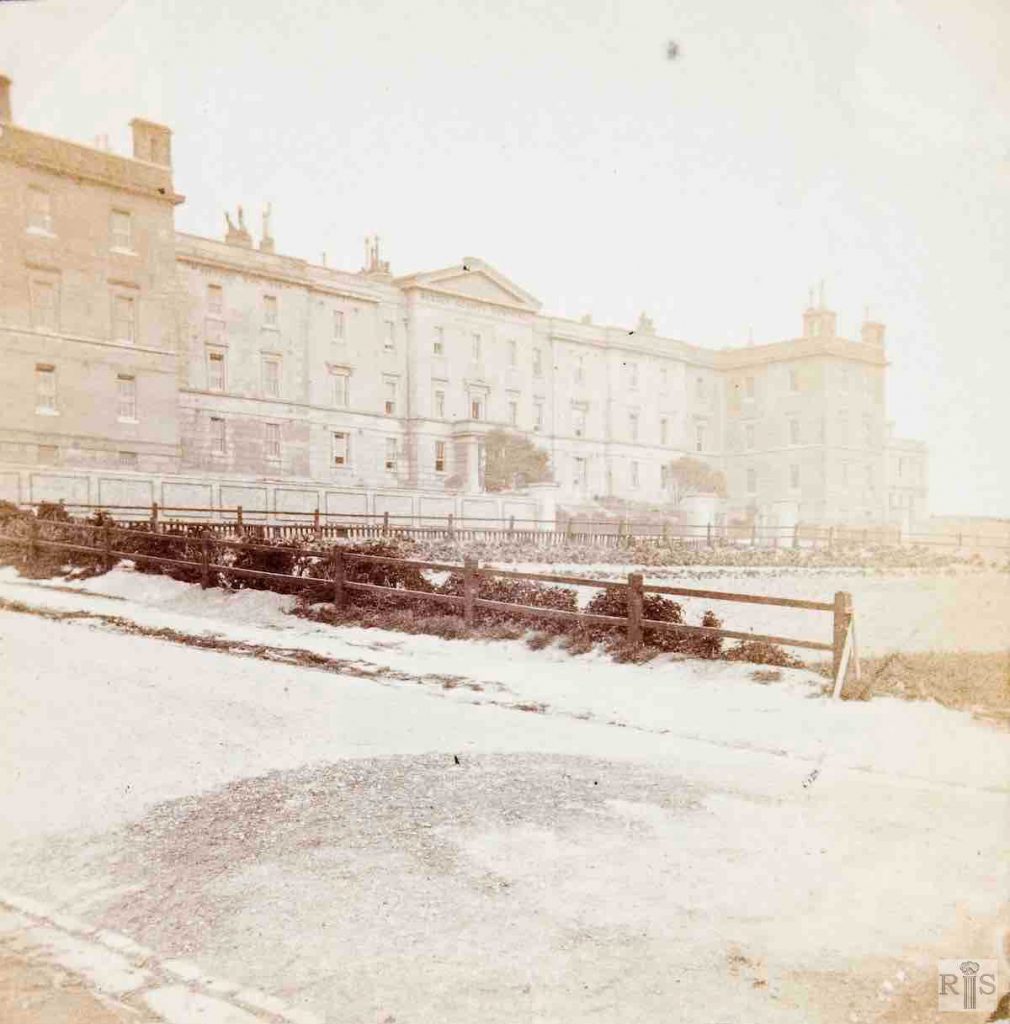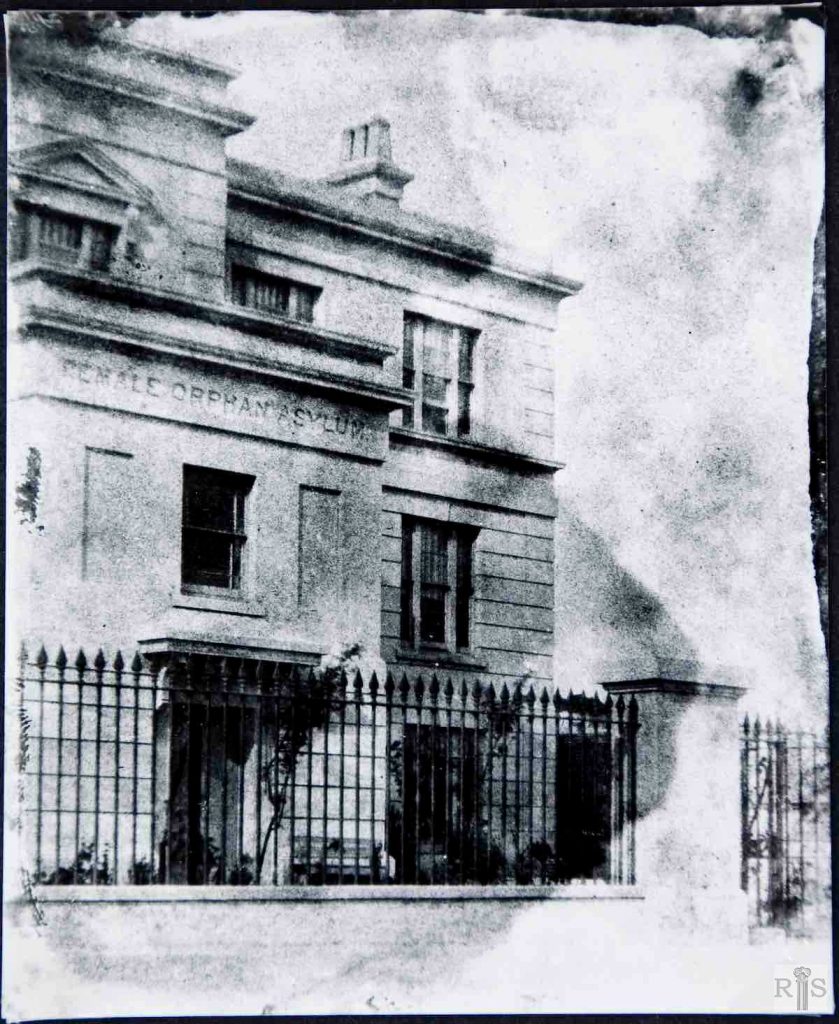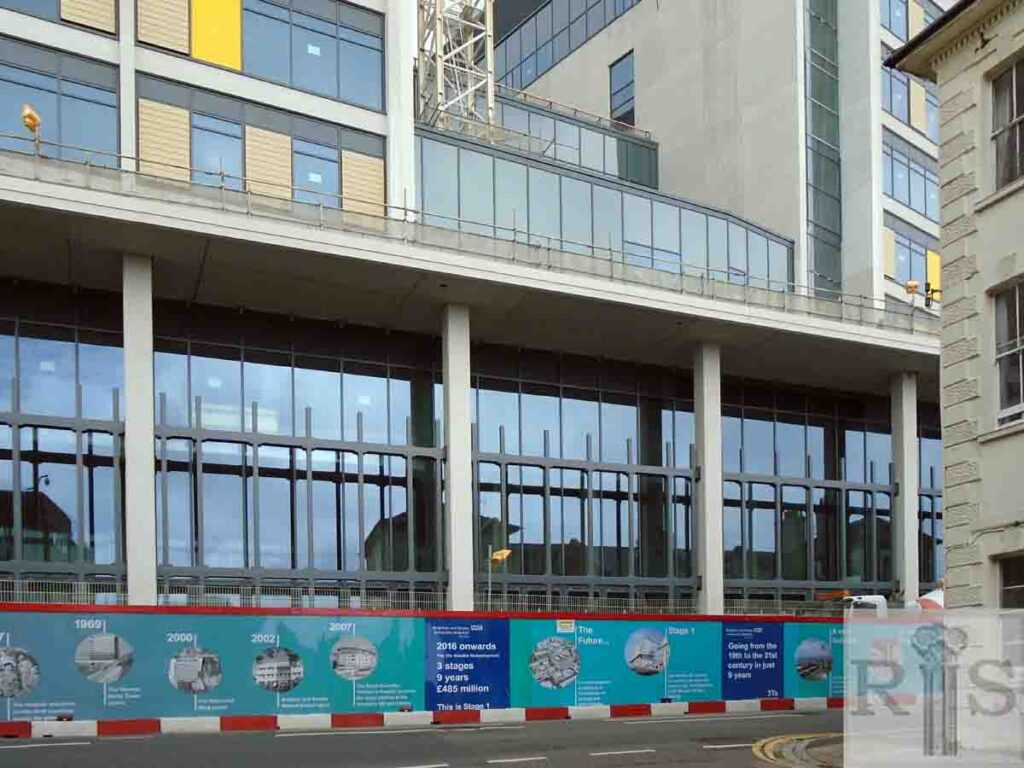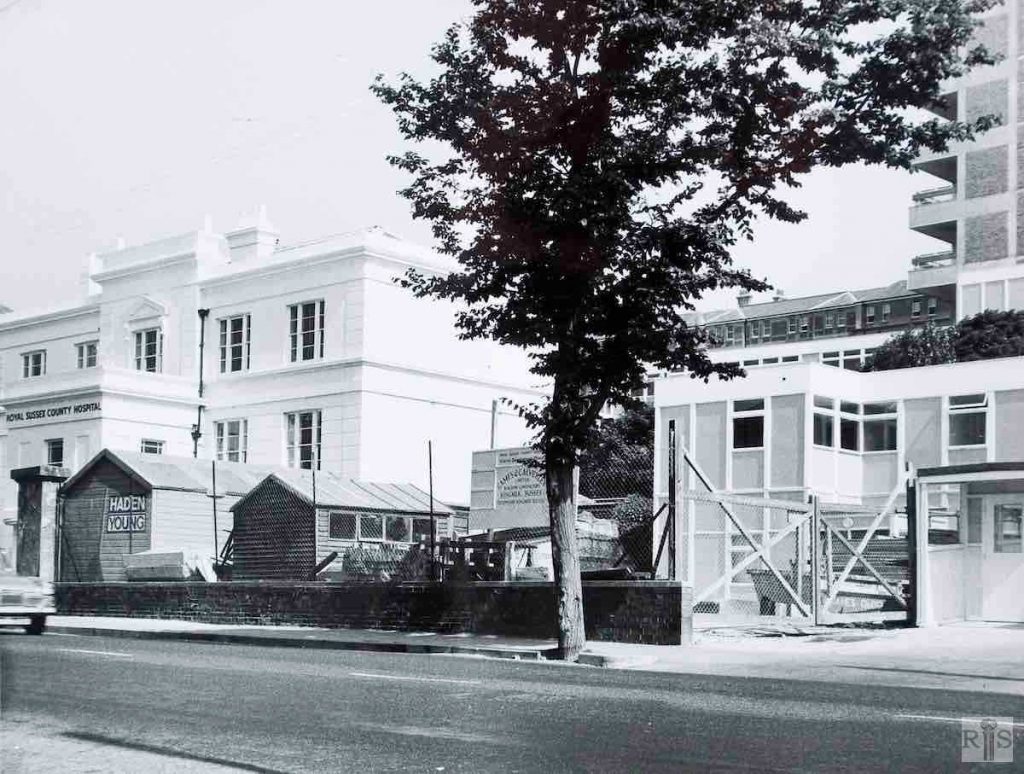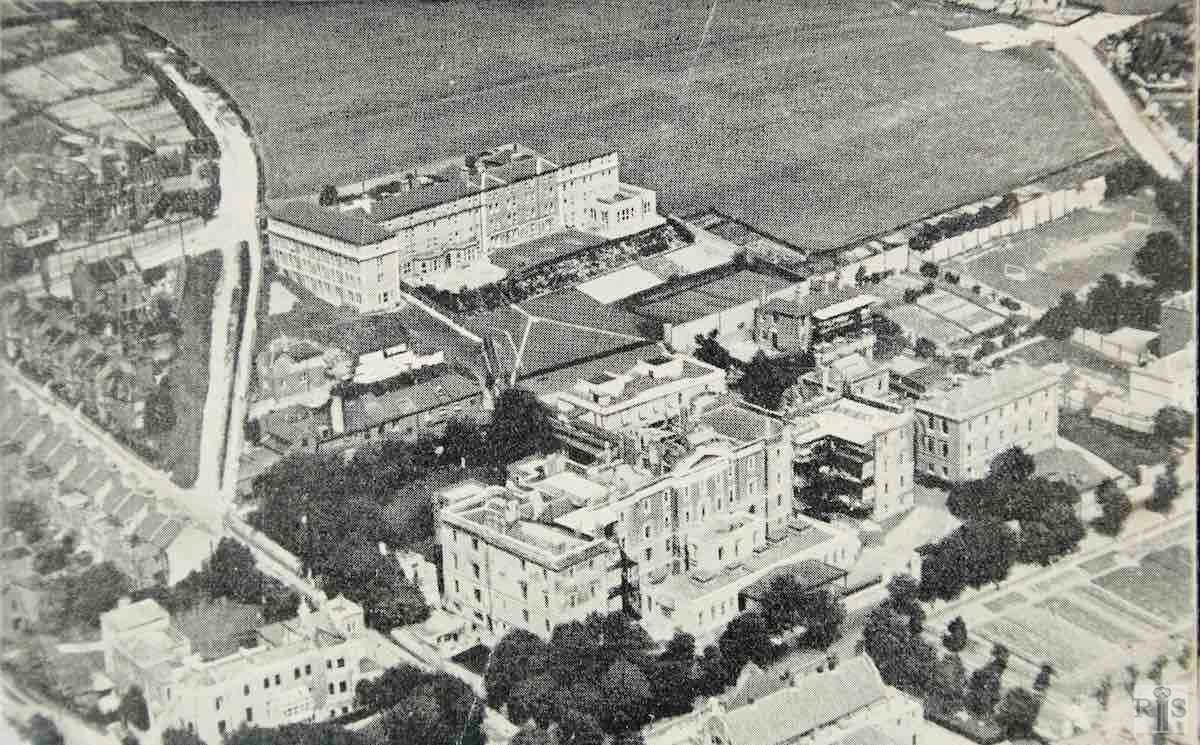
James Gray: From Upper Sudeley Street, looking across the gardens on which was later built the Sussex Eye Hospital. Period unknown probably before 1914. jgc_23_023
2018: The Eye Hospital in the foreground blocks the view of the Barry Building and the Sussex County Hospital. Although not visible from this angle, the main hospital site is now subject to extensive redevelopment. (Photographer: David Jackson)
James Gray: A more restricted view [than jgc_23_031], of which the Sussex County Hospital is the focal point. Running diagonally from Abbey Road (left) is the chalk track, known for years as Whitehawk Hill Road, which now leads to Bristol Flats. The other road, on the right, led to recently built houses in Bristol Estate. Period – late 1920s. jgc_23_032
James Gray: There is not a clue as to the age of this old photograph. I have been unable to discover when the trees were planted in Paston Place. My opinion is that this dates from the 1860s or early 1870s. jgc_23_029
James Gray: The larger photograph is a later one, although by only a few years, judging by the slight growth of trees. Note the removal of the lamp post from outside the entrance in Eastern Road to half way down Paston Place. jgc_23_045
2018: This photograph cannot do justice to the beautiful symmetry of the original Barry building pictured in Gray’s 19th century picture. Both East and West Wings are now obscured by more modern hospital buildings but the central pediment is still clearly visible from this location on Paston Place. (Photographer: David Jackson)
James Gray: A photographic copy of a well known drawing of the Hospital in its early years, though the date attributed to it may be the subject of some doubt. Certainly the trains and viaducts seen in the scroll work would not have been in use in that year. At the left, note the two windmills, probably Taylor’s Mill and Albion Hill Mill, both then standing in the vicinity of Windmill Street. jgc_23_047
James Gray: The smaller photograph is obviously of the same period as that on the previous page [see jgc_23_045 above], about 1870. It looks from a very rural Abbey Road across waste ground to the main entrance. jgc_23_046
James Gray: HRH Princess Mary opening the New Home for Nurses at the Royal Sussex County Hospital, 22 Nov 1921. The Mayor was Alderman E J Pankhurst after whom Pankhurst Avenue on the Queen’s Park Estate, then building, was named. jgc_23_048
James Gray: A very early photograph of the Female Orphan Asylum, dating from about 1860 and recently printed from waxed paper negative. This building was erected in 1853, and the Asylum moved here from smaller premises in Gloucester Street. In 1936, the Asylum moved to still larger premises in Bristol Gate. jgc_23_049
James Gray: This photograph, taken in July 1975, one hundred and fifteen years after the other, shows the building externally unchanged, but much more spruce. In 1937, the building was taken over by the Royal County Hospital and has been occupied for this purpose ever since. jgc_23_050
2020: Gray’s wonderfully atmospheric photograph of the Female Orphan Asylum was taken in the mid-Victorian period and is one of the oldest in the collection. The site of the old Asylum now lies beneath the massive and ongoing half billion pound development of the Royal Sussex County Hospital. It is towards the eastern end of that development, roughly opposite Upper Sudeley Street. The developer’s slogan – ‘Going from the 19th century to the 21st in just 9 years’ – seems to sum up the total change to the environment in this part of East Brighton. (Photographer: David Jackson)

